The headline that sends a shiver down the spine of any keen gardener or proud homeowner - Hosepipe Ban!
We’ve had some pretty extreme temperatures of late, many parts of the UK are officially in drought after some of the driest conditions in 90 years.
Our rivers and reservoirs are way below the levels they should be, and when you think that your average garden sprinkler will use up to 1000 litres of water in 1 hour, you can see why the ban is necessary.
To put that figure into perspective, according to Water UK, the average person uses around 142 litres a day. That means a family of 4 will use around 500 litres of water per day, so a sprinkler is using 2 days' worth of water in just 1 hour!
With water and energy bills also rising to unprecedented levels, the need to conserve supplies and reduce the amount of water we use is greater than ever.
Our gardens still need a drink when we hit a prolonged dry sunny spell though, so we’ve got some great tips on how you can best conserve water in your garden and water more efficiently during the summer months.
In reality, you can actually do more damage over-watering your garden than you can under-watering it, and what most of us don’t realise is that many of the popular plants in the UK are made of pretty tough stuff.
Even an established lawn with healthy roots can look scorched and brown in the summer months but it’s amazing how quickly it’ll come back to a luscious green when the rain starts falling.

Pro Gardeners Tip
The way different plants can withstand drought conditions varies enormously, so it pays to know which plants will need regular watering and which can survive a dry spell so you can focus efforts on those that need it most.
Lazy Susan’s tips for watering your garden in a drought
The key to watering your garden in a drought is to look at ways you can water more efficiently and collect and conserve water that can be recycled in your garden.
1. Put away the hosepipe and reach for the watering can
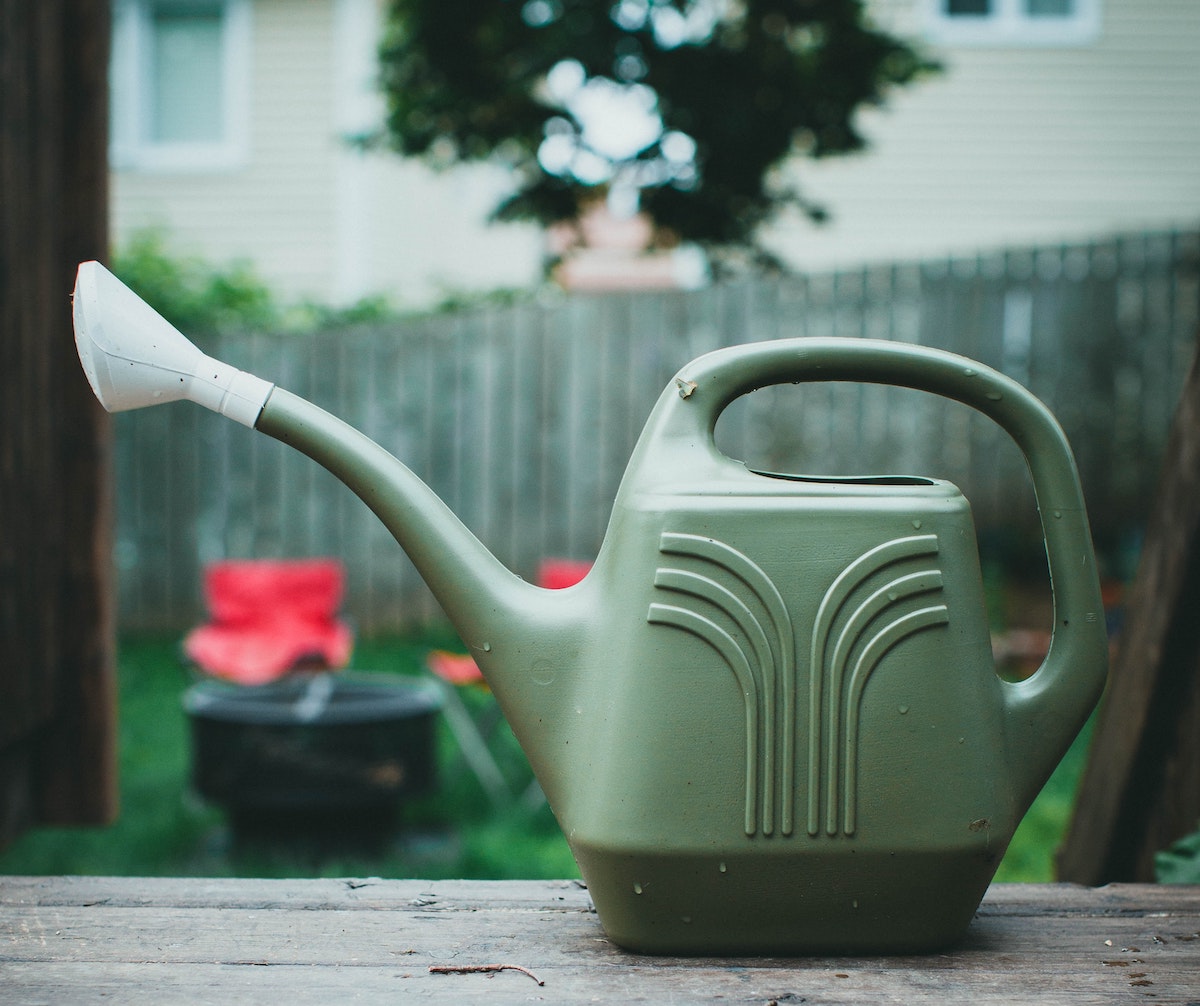
This one goes without saying. Put the hosepipe away!
Lazy Susan is based in Portsmouth and we currently have a full ban in effect. Our local provider, Southern Water released the following statement when the ban came into effect:
"If you notice a neighbour, family or friend, in the affected areas, using water for the restricted activities please gently remind them of the restrictions in place and direct them to our website for more information. If you see anyone repeatedly breaching the restrictions, please let us know via our customer service team.”
If caught flouting the rules, you could face a massive fine of up to £1,000!
However, whilst the hosepipe is a no-no, you can still water your garden with a watering can.
On average this will save you around 80% of water compared with a hosepipe/sprinkler but there is significantly less waste (from spray, runoff, etc) and your plants will still get the drink they need.
2. Collect, store and re-use rainwater
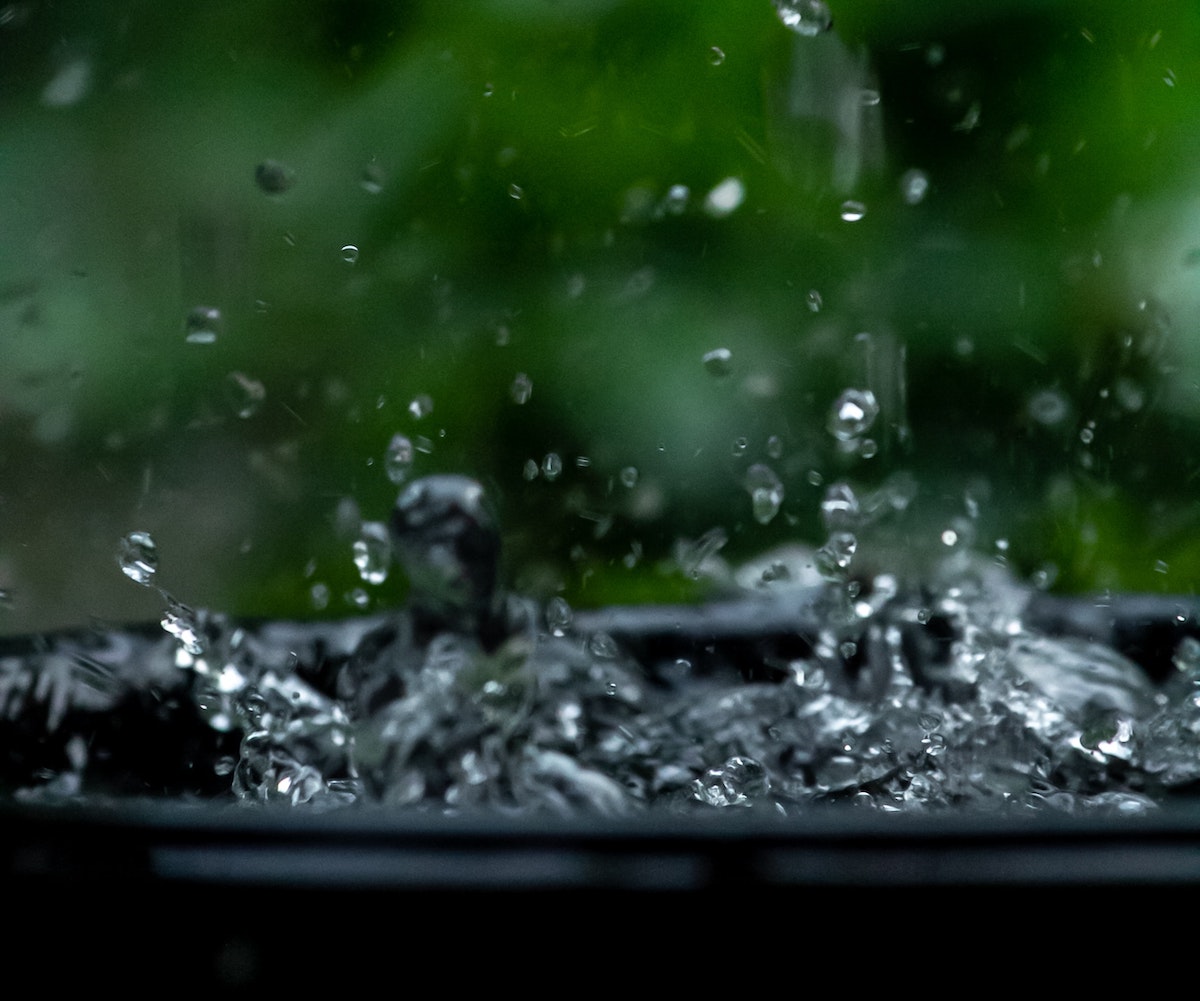
This is something I have been doing in my own garden for a number of years. We collect water runoff from our garage with a simple 230-litre tank and a butt kit attached to the downpipe.
Not only is rainwater better for our garden (we primarily use it on our small veg plot), but it saves us money and provides water when in drought.
You can pick up a water harvesting/butt kit for around the £30-£60 mark and most of the large Garden/DIY/Home Improvement stores sell a range of tanks and fixing kits.
Gardeners World recently published their 15 of the best water butts for 2022 and that has some great advice and product recommendations.
3. Install Drip Irrigation
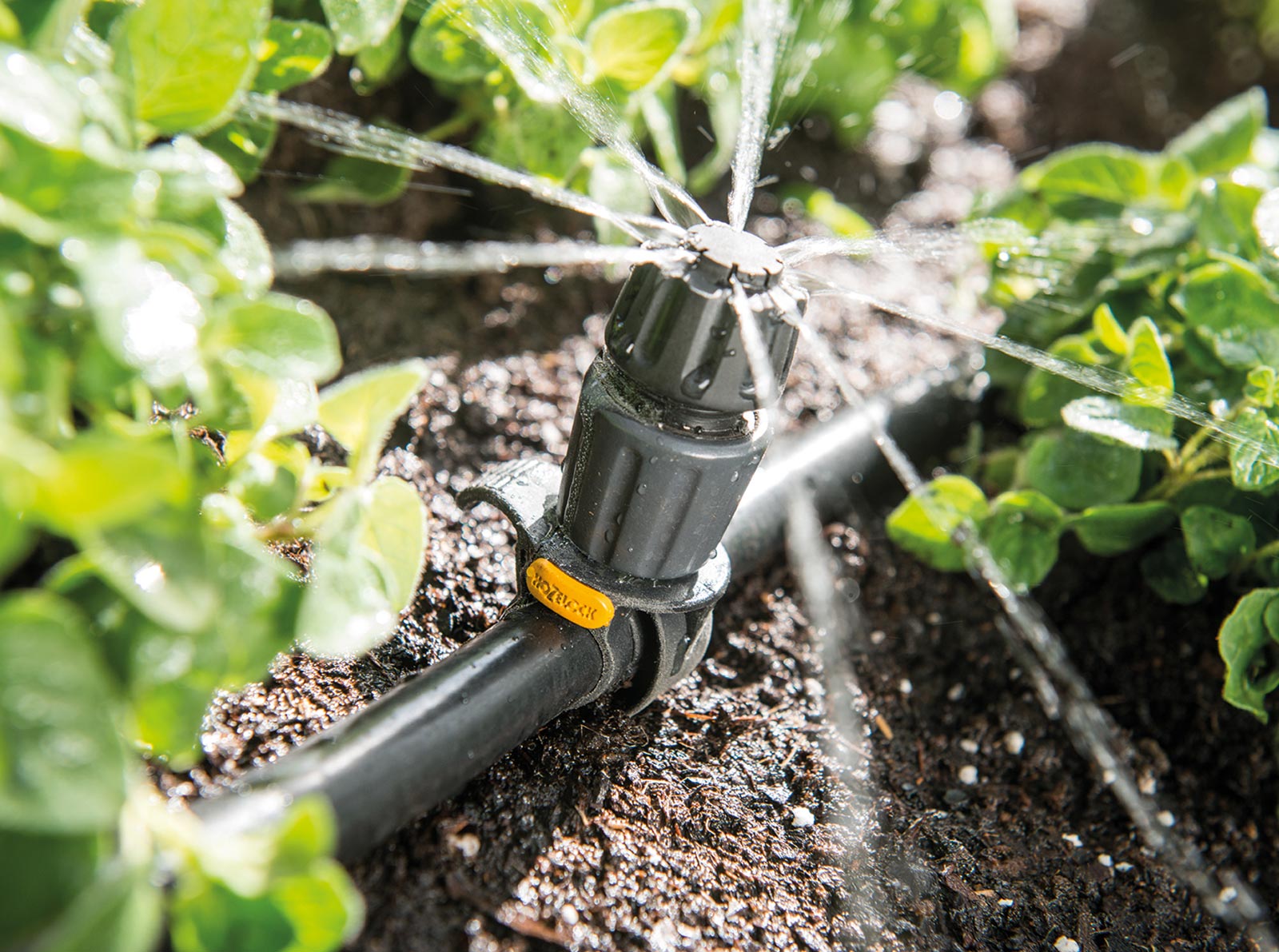
Drip irrigation systems (such as the Easy Drip Universal Kit from Hozelock pictured above) are one of the most efficient garden watering solutions, and whilst they require a large initial outlay, that cost is soon recouped in water used/saved.
Designed to precisely release water to the roots of your plants via a network of pipes, they use emitters positioned close to the root zone that drip water directly into the soil.
They significantly reduce water waste from runoff and keep moisture levels at an optimal range that, even in a drought, will help plant productivity.
According to Simplify Gardening:
“A well-designed drip irrigation system will help conserve plenty of water. The reductions in deep percolation, surface runoff, and evaporation from the soil estimate a 60% decrease in water consumption.”
4. Recycle water from the inside of your home
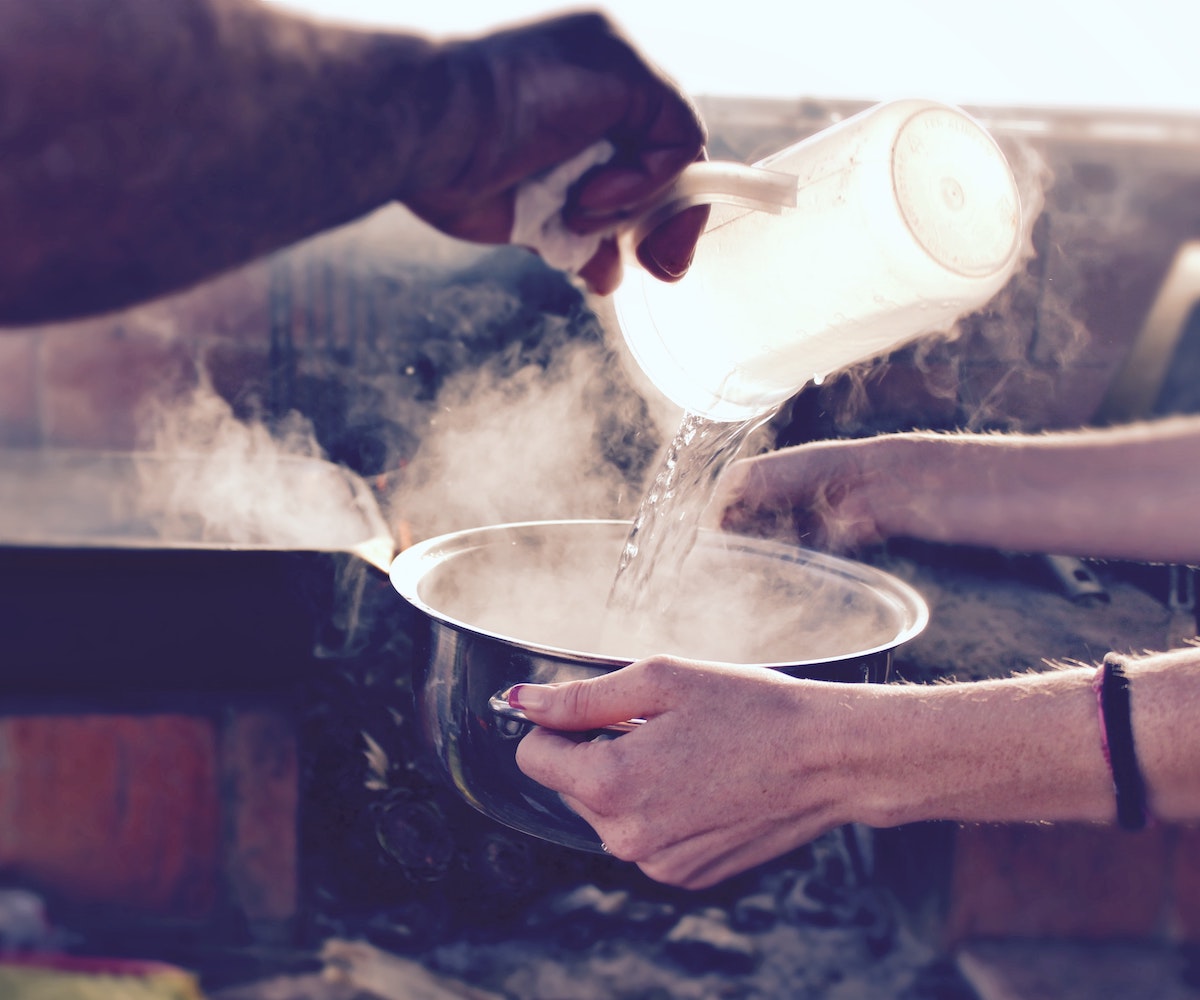
Another solution is to recycle and reuse what is known as “grey water” from the inside of your home. Yes, even that old water in your sink or bathtub can be recycled!
Domestic wastewater from your kitchen, washing machine or baths, sinks and showers can all be used to water your plants.
For example, if you boil a pan of vegetables; when done, take the veg out, leave it to cool and it is perfect for watering hanging baskets and containers.
Even wastewater with gentle household soaps and detergents is harmless to plants, so can be harvested and reused.
However, anything with bleach, disinfectant or dishwasher salt is what is known as "black water" and this is a definite no-no. This is extremely harmful to plants and it will mess with your soil's pH levels!
Treehugger’s How to Use Grey Water in the Garden is a great article if you want to learn more about how to collect and save grey water to combat drought conditions and reuse it in your garden.
5. Go for drought-tolerant plants

Often with a drought, we get caught out. We are often guilty as gardeners of planting what we love and working hard to help it thrive.
Our changing climate means we may have to focus more on plants that are better suited to coping with hot dry summers.
Many think that Mediterranean plants are the solution but whilst these are great for the heat, they’re highly susceptible to root rot if we see heavy downpours.
It’s a balancing act I'm afraid and every garden is different!
Our preference is to plant native hardy drought-tolerant plants such as the Primrose (Primula Vulgaris) as shown in the picture above. They have very low moisture and maintenance demands, so will generally thrive whatever the British summertime throws at them.
Also look for varieties with grey/green or silvery leaves as they better reflect the sun’s UV rays, which will help them better conserve moisture.
Choose plants which suit the soil type in your garden and aspect too as this will give them the best chance of flourishing whatever the conditions
6. Focus efforts on your soil
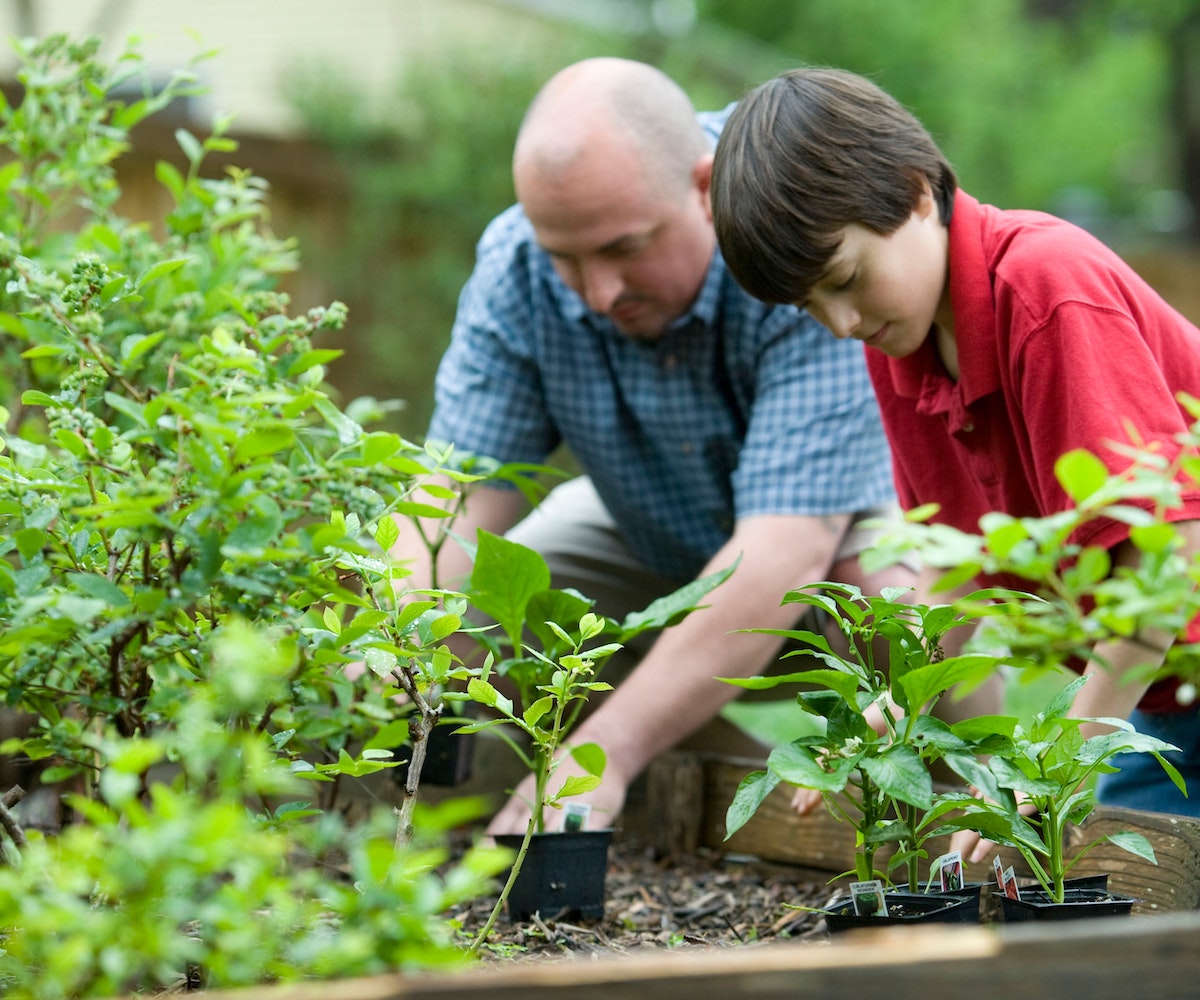
During a period of drought is when ensuring your soil is in tip-top condition really pays off. Through deep cultivation and the introduction of organic matter, you will dramatically improve your soil's structure and water retention.
Ensure that pH levels are between 5.5 and 7.5 and apply the right amount of fertiliser to help plants use water most efficiently.
Make sure any weeds are removed and apply a good layer of gravel, stones, mulch or bark as this will help the soil to still breathe but better retain moisture.
Making our gardens more resistant to drought is not a case of digging up and starting over from scratch. Think about ways you can recycle, harvest and conserve water. Focus on soil cultivation, plant choice and regular garden maintenance will help see us through.
When coping with potential drought conditions, the Lazy Susan strategy is to get as much water into the soil as we can and look at healthy and effective ways to keep it in the soil where it’s needed.
If you’ve got any photos of your Lazy Susan Garden Furniture in situ, then we’d love to see them for our Do Some Good charity campaign... You can tag us @LazySusanFurniture on Instagram or Facebook or email them to us at [email protected].



